Star Wars Radio: A Wind To Shake The Stars
 The first episode of Brian Daley’s radio drama adaptation of the science fiction blockbuster Star Wars airs on National Public Radio stations in the U.S. The series is produced by the NPR affiliate at the University of Southern California, where George Lucas attended film school (and to whom he sold the radio adaptation rights for the princely sum of one dollar). Mark Hamill and Anthony Daniels are the only actors to reprise their movie roles, with the rest of the characters being recast.
The first episode of Brian Daley’s radio drama adaptation of the science fiction blockbuster Star Wars airs on National Public Radio stations in the U.S. The series is produced by the NPR affiliate at the University of Southern California, where George Lucas attended film school (and to whom he sold the radio adaptation rights for the princely sum of one dollar). Mark Hamill and Anthony Daniels are the only actors to reprise their movie roles, with the rest of the characters being recast.
Revenge Of The Jedi
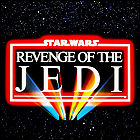 George Lucas completes his handwritten first-draft screenplay for the third Star Wars film, titled Revenge Of The Jedi at this early stage. Revisions to the script will continue throughout 1981, with The Empire Strikes Back and Raiders Of The Lost Ark co-writer Lawrence Kasdan once again contributing to the story and dialogue; a revision to the movie’s title will also be made, though merchandising with the early title will already be in circulation by that time.
George Lucas completes his handwritten first-draft screenplay for the third Star Wars film, titled Revenge Of The Jedi at this early stage. Revisions to the script will continue throughout 1981, with The Empire Strikes Back and Raiders Of The Lost Ark co-writer Lawrence Kasdan once again contributing to the story and dialogue; a revision to the movie’s title will also be made, though merchandising with the early title will already be in circulation by that time.
Star Wars vs. Galactica: case dismissed
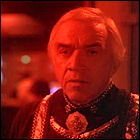 Long after Glen A. Larson’s science fiction series Battlestar Galactica has completed its run, a California judge throws out 20th Century Fox’s 1978 lawsuit, which alleged that Galactica was too close to elements of Star Wars for the studio’s comfort. (Also at issue, though not specifically mentioned in the legal proceedings, was Universal Studios’ hiring of such Star Wars personnel as FX guru John Dykstra and illustrator Ralph McQuarrie to work on Galactica.) Universal’s television series is declared different enough in key areas to not be considered a rip-off – small comfort for the studio, since ABC cancelled had the series earlier in the year. Still, Galactica’s legal status will come into play later, as Universal will later reassert and exploit its rights to the basic Battlestar Galactica storyline in the 21st century. This is not the end of the lawsuit, however; much like both franchises, it too is revived in 1983, and Universal is ordered to pay 20th Century Fox a settlement of nearly a quarter million dollars in 1984.
Long after Glen A. Larson’s science fiction series Battlestar Galactica has completed its run, a California judge throws out 20th Century Fox’s 1978 lawsuit, which alleged that Galactica was too close to elements of Star Wars for the studio’s comfort. (Also at issue, though not specifically mentioned in the legal proceedings, was Universal Studios’ hiring of such Star Wars personnel as FX guru John Dykstra and illustrator Ralph McQuarrie to work on Galactica.) Universal’s television series is declared different enough in key areas to not be considered a rip-off – small comfort for the studio, since ABC cancelled had the series earlier in the year. Still, Galactica’s legal status will come into play later, as Universal will later reassert and exploit its rights to the basic Battlestar Galactica storyline in the 21st century. This is not the end of the lawsuit, however; much like both franchises, it too is revived in 1983, and Universal is ordered to pay 20th Century Fox a settlement of nearly a quarter million dollars in 1984.
More about Battlestar Galactica in the LogBook and theLogBook.com Store
Battlestar Galactica now streaming on Amazon Prime
The Empire Strikes Back
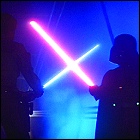 With expectations riding higher than they probably ever will for another sequel in movie history, the first Star Wars sequel, The Empire Strikes Back, hits theaters and kicks off a whole new wave of merchandise. Yoda, AT-ATs, and Darth Vader’s march are unleashed on the world, while the cliffhanger ending hooks everyone in for the third movie with a shocking reputation about Luke’s lineage.
With expectations riding higher than they probably ever will for another sequel in movie history, the first Star Wars sequel, The Empire Strikes Back, hits theaters and kicks off a whole new wave of merchandise. Yoda, AT-ATs, and Darth Vader’s march are unleashed on the world, while the cliffhanger ending hooks everyone in for the third movie with a shocking reputation about Luke’s lineage.
The Empire Strikes Cash
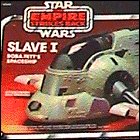 In contrast to 1977, where no toy licensee had a lock on the right to make Star Wars toys until weeks after the movie’s premiere, Kenner rolls out the first toys for The Empire Strikes Back nearly a month ahead of the movie; kids (and their long-suffering parents) make the first wave of figures an immediate sell-out, despite not knowing anything about the movie’s plotline.
In contrast to 1977, where no toy licensee had a lock on the right to make Star Wars toys until weeks after the movie’s premiere, Kenner rolls out the first toys for The Empire Strikes Back nearly a month ahead of the movie; kids (and their long-suffering parents) make the first wave of figures an immediate sell-out, despite not knowing anything about the movie’s plotline.
More about Kenner Star Wars Toys in ToyBox
Hear about it on the Sci-Fi 5 podcast
Beyond Westworld: Sound Of Terror
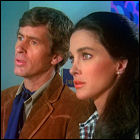 The third episode of Beyond Westworld airs on CBS, starring Jim McMullan, Connie Sellecca, and James Wainwright. Rene Auberjonois (Benson, Star Trek: Deep Space Nine) and Ronnie Sue Blakley (A Nightmare On Elm Street) guest star. Due to low ratings, CBS cancels Beyond Westworld after this episode airs, leaving two completed shows unaired.
The third episode of Beyond Westworld airs on CBS, starring Jim McMullan, Connie Sellecca, and James Wainwright. Rene Auberjonois (Benson, Star Trek: Deep Space Nine) and Ronnie Sue Blakley (A Nightmare On Elm Street) guest star. Due to low ratings, CBS cancels Beyond Westworld after this episode airs, leaving two completed shows unaired. 
Beyond Westworld: My Brother’s Keeper
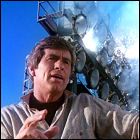 The second episode of Beyond Westworld airs on CBS, starring Jim McMullan, Connie Sellecca, and James Wainwright. NFL players Anthony Davis and Delvin Williams guest star in a football-themed episode.
The second episode of Beyond Westworld airs on CBS, starring Jim McMullan, Connie Sellecca, and James Wainwright. NFL players Anthony Davis and Delvin Williams guest star in a football-themed episode. 
Beyond Westworld: Westworld Destroyed
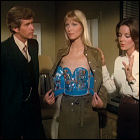 Attempting to build a TV franchise onto the 1973 hit movie Westworld, the first episode of Beyond Westworld airs on CBS, starring Jim McMullan and James Wainwright. Cassandra Peterson (later better known as Elvira) guest stars.
Attempting to build a TV franchise onto the 1973 hit movie Westworld, the first episode of Beyond Westworld airs on CBS, starring Jim McMullan and James Wainwright. Cassandra Peterson (later better known as Elvira) guest stars.  Hear about it on the Sci-Fi 5 podcast
Hear about it on the Sci-Fi 5 podcast
The Star Wars Holiday Special
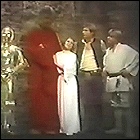 Heavily promoted and given a prime-time slot on a Friday night in a world starved for more Star Wars, The Star Wars Holiday Special unfolds on CBS, enveloping millions of viewers in the slowly-dawning horror that the promise of a new adventure for Luke, Han and friends has lured them into watching a third-rate variety show, albeit one in which the character of Boba Fett makes his first appearance. George Lucas disowns the Holiday Special almost immediately, and it is never allowed to be repeated again.
Heavily promoted and given a prime-time slot on a Friday night in a world starved for more Star Wars, The Star Wars Holiday Special unfolds on CBS, enveloping millions of viewers in the slowly-dawning horror that the promise of a new adventure for Luke, Han and friends has lured them into watching a third-rate variety show, albeit one in which the character of Boba Fett makes his first appearance. George Lucas disowns the Holiday Special almost immediately, and it is never allowed to be repeated again.  Hear about it on the Sci-Fi 5 podcast
Hear about it on the Sci-Fi 5 podcast
A new recruit for the Empire
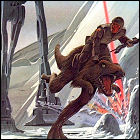 After nearly a year of George Lucas struggling to revise the script for The Empire Strikes Back after the death of his original co-writer, Leigh Brackett, writer Lawrence Kasdan turns in his revisions for the fourth draft of the movie’s screenplay. Kasdan has been brought on board the Star Wars sequel by Lucas, who is co-producing a movie with Steven Spielberg, Raiders Of The Lost Ark, whose script has also been revised by Kasdan – and at this point, Lucas has yet to read Kasdan’s revisions to the Raiders script.
After nearly a year of George Lucas struggling to revise the script for The Empire Strikes Back after the death of his original co-writer, Leigh Brackett, writer Lawrence Kasdan turns in his revisions for the fourth draft of the movie’s screenplay. Kasdan has been brought on board the Star Wars sequel by Lucas, who is co-producing a movie with Steven Spielberg, Raiders Of The Lost Ark, whose script has also been revised by Kasdan – and at this point, Lucas has yet to read Kasdan’s revisions to the Raiders script.
“Off-brand” Star Wars toys taken off market
 A California judge sides with 20th Century Fox and Kenner Toys in a million-dollar lawsuit against Hong Kong-based toymaker Arco Industries. At issue in the suit is Arco’s “Spacewar” line of action figures, clearly meant to barely resemble such Star Wars characters as Darth Vader, C-3PO and stormtroopers without actually securing the licensing to do so. Kenner contends that the knock-off toys have been eating into its profits, and Arco is far from the only company to suddenly release generic space figures with designs and sculpts that are suspiciously close to elements of the Star Wars universe.
A California judge sides with 20th Century Fox and Kenner Toys in a million-dollar lawsuit against Hong Kong-based toymaker Arco Industries. At issue in the suit is Arco’s “Spacewar” line of action figures, clearly meant to barely resemble such Star Wars characters as Darth Vader, C-3PO and stormtroopers without actually securing the licensing to do so. Kenner contends that the knock-off toys have been eating into its profits, and Arco is far from the only company to suddenly release generic space figures with designs and sculpts that are suspiciously close to elements of the Star Wars universe.
Star Wars vs. Battlestar
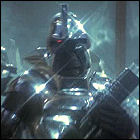 20th Century Fox files a lawsuit against Hollywood rival Universal Pictures over Universal’s upcoming made-for-TV science fiction saga Battlestar Galactica, which 20th Century Fox contends is a copy of its theatrical smash hit Star Wars. Specificially, the studio behind Star Wars claims that the television series infringes on the script for Star Wars, and requests an injunction to bring production to a halt and keep ABC from airing it. The first decision in the case won’t happen until 1980, by which time Battlestar Galactica will already have ended its TV run.
20th Century Fox files a lawsuit against Hollywood rival Universal Pictures over Universal’s upcoming made-for-TV science fiction saga Battlestar Galactica, which 20th Century Fox contends is a copy of its theatrical smash hit Star Wars. Specificially, the studio behind Star Wars claims that the television series infringes on the script for Star Wars, and requests an injunction to bring production to a halt and keep ABC from airing it. The first decision in the case won’t happen until 1980, by which time Battlestar Galactica will already have ended its TV run.
More about Battlestar Galactica in the LogBook and theLogBook.com Store
Battlestar Galactica now streaming on Amazon Prime
Hear about it on the Sci-Fi 5 podcast
Star Wars Sequel
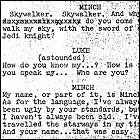 Science fiction writer Leigh Brackett, who is battling cancer, turns in her first and only draft of a screenplay simply titled “Star Wars Sequel” (later to be known as The Empire Strikes Back); this early draft includes the notation “Episode II”. Brackett, a golden-age SF writer hired by Lucas to help him generate ideas for the second film, loses her battle with cancer soon afterward, and the screenplay is revamped significantly before shooting, though the finished movie will retain her writing credit.
Science fiction writer Leigh Brackett, who is battling cancer, turns in her first and only draft of a screenplay simply titled “Star Wars Sequel” (later to be known as The Empire Strikes Back); this early draft includes the notation “Episode II”. Brackett, a golden-age SF writer hired by Lucas to help him generate ideas for the second film, loses her battle with cancer soon afterward, and the screenplay is revamped significantly before shooting, though the finished movie will retain her writing credit.
Star Wars action figures
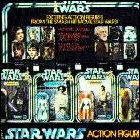 With an incredibly tight lead time (rights were secured some weeks after Star Wars became a box-office hit), General Mills subsidiary Kenner Toys brings the first Star Wars action figures to market. A dozen characters are sold individually, with a colorful mixture of the film’s heroes (Luke Skywalker, Han Solo, Princess Leia, Ben Kenobi, R2-D2, C-3PO, Chewbacca) and villains (Darth Vader, Stormtrooper, Death Squad Commander, Tusken Raider, Jawa). While Kenner brings the figures to market in both the industry-standard 12-inch scale and a smaller, cheaper 3 3/4″ scale, marketing focuses almost entirely on the smaller toys, which then redefine the industry-standard size of boys’ character toys (and make any future vehicles and playsets much more affordable). Ironically, prior to the movie’s release when no one expected Star Wars to take off, 20th Century Fox surrendered all toy and merchandising rights to George Lucas, meaning that the runaway success of the toy range is key to his fortune.
With an incredibly tight lead time (rights were secured some weeks after Star Wars became a box-office hit), General Mills subsidiary Kenner Toys brings the first Star Wars action figures to market. A dozen characters are sold individually, with a colorful mixture of the film’s heroes (Luke Skywalker, Han Solo, Princess Leia, Ben Kenobi, R2-D2, C-3PO, Chewbacca) and villains (Darth Vader, Stormtrooper, Death Squad Commander, Tusken Raider, Jawa). While Kenner brings the figures to market in both the industry-standard 12-inch scale and a smaller, cheaper 3 3/4″ scale, marketing focuses almost entirely on the smaller toys, which then redefine the industry-standard size of boys’ character toys (and make any future vehicles and playsets much more affordable). Ironically, prior to the movie’s release when no one expected Star Wars to take off, 20th Century Fox surrendered all toy and merchandising rights to George Lucas, meaning that the runaway success of the toy range is key to his fortune.
The early bird gets an empty box
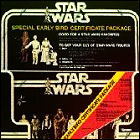 Caught completely off-guard by the seemingly unstoppable runaway success of Star Wars, whose toy license it signed on for earlier in the year, toy manufacturer Kenner does something desperate and unprecedented: it sells a mostly-empty box (contents: the Force?) called the Star Wars Early Bird Kit, containing stickers, pictures, and a card to mail off to receive four figures – Luke, Princess Leia, R2-D2 and Chewbacca – by mail sometime between “February and May 1978.” The delay is needed to ramp up production on the figures, which will also be available at retail in 1978. To the surprise of everyone, including Kenner executive Bernard Loomis, who devised the Early Bird Kit, the result is a runaway sales success story.
Caught completely off-guard by the seemingly unstoppable runaway success of Star Wars, whose toy license it signed on for earlier in the year, toy manufacturer Kenner does something desperate and unprecedented: it sells a mostly-empty box (contents: the Force?) called the Star Wars Early Bird Kit, containing stickers, pictures, and a card to mail off to receive four figures – Luke, Princess Leia, R2-D2 and Chewbacca – by mail sometime between “February and May 1978.” The delay is needed to ramp up production on the figures, which will also be available at retail in 1978. To the surprise of everyone, including Kenner executive Bernard Loomis, who devised the Early Bird Kit, the result is a runaway sales success story.
The further adventures of Luke Skywalker
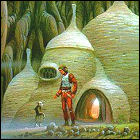 A series of story conferences begin between Star Wars writer/director George Lucas and science fiction writer Leigh Brackett, the first work toward shaping the storyline for an anticipated (but still untitled) Star Wars sequel film. Lucas has brought Brackett on board to contribute new ideas, but she will only submit a first draft before succumbing to cancer. The conferences continue through early December; the eventual product of these early story meetings will be 1980’s The Empire Strikes Back.
A series of story conferences begin between Star Wars writer/director George Lucas and science fiction writer Leigh Brackett, the first work toward shaping the storyline for an anticipated (but still untitled) Star Wars sequel film. Lucas has brought Brackett on board to contribute new ideas, but she will only submit a first draft before succumbing to cancer. The conferences continue through early December; the eventual product of these early story meetings will be 1980’s The Empire Strikes Back.
Star Wars tops the charts
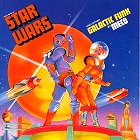 Produced in the wake of Star Wars mania, Meco Menardo’s disco cover of John Williams’ music from Star Wars tops the Billboard Hot 100 chart for two weeks. A shortened, radio-friendly single is the song certified as #1, although the album version (titled Star Wars and Other Galactic Funk) is an extended suite lasting over 15 minutes and covering most of the movie’s major music themes. Meco would continue to ride the Star Wars train, disco-style, for years to come.
Produced in the wake of Star Wars mania, Meco Menardo’s disco cover of John Williams’ music from Star Wars tops the Billboard Hot 100 chart for two weeks. A shortened, radio-friendly single is the song certified as #1, although the album version (titled Star Wars and Other Galactic Funk) is an extended suite lasting over 15 minutes and covering most of the movie’s major music themes. Meco would continue to ride the Star Wars train, disco-style, for years to come.
More about Star Wars soundtracks in theLogBook.com’s Music Reviews
Hear about it on the Sci-Fi 5 podcast
Kenner signs on for Star Wars madness
 The unexpected runaway success of a dark horse in the summer movie race makes for a mad dash for the toy rights. The winner of that race is Kenner Products, the toy division of cereal maker General Mills, and the prize is the exclusive license to market toys and other products based on Star Wars. Prior to the movie’s release, however, George Lucas has convinced 20th Century Fox to allow him to keep all toy licensing rights, meaning that ongoing licensing payments are made directly to Lucas, providing him with the lion’s share of his future wealth. Kenner executive Bernard Loomis finds himself fighting to convince his own sales team that this movie will attract more than a momentary audience. With the late start and the long lead time on design, tooling and manufacture, Loomis concocts an audacious marketing scheme involving an “empty box” available by Christmas.
The unexpected runaway success of a dark horse in the summer movie race makes for a mad dash for the toy rights. The winner of that race is Kenner Products, the toy division of cereal maker General Mills, and the prize is the exclusive license to market toys and other products based on Star Wars. Prior to the movie’s release, however, George Lucas has convinced 20th Century Fox to allow him to keep all toy licensing rights, meaning that ongoing licensing payments are made directly to Lucas, providing him with the lion’s share of his future wealth. Kenner executive Bernard Loomis finds himself fighting to convince his own sales team that this movie will attract more than a momentary audience. With the late start and the long lead time on design, tooling and manufacture, Loomis concocts an audacious marketing scheme involving an “empty box” available by Christmas.
Star Wars
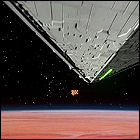 Boasting a story and characters with universal appeal, a magnificent soundtrack, and special effects unlike anything that had been seen before, George Lucas’ Star Wars arrives, changing the movie industry and geekdom forever. Word-of-mouth – to say nothing of lines of moviegoers winding around the block, eager to immediately see the movie again – spreads like wildfire, and suddenly it’s okay to be a science fiction fan.
Boasting a story and characters with universal appeal, a magnificent soundtrack, and special effects unlike anything that had been seen before, George Lucas’ Star Wars arrives, changing the movie industry and geekdom forever. Word-of-mouth – to say nothing of lines of moviegoers winding around the block, eager to immediately see the movie again – spreads like wildfire, and suddenly it’s okay to be a science fiction fan.
More about Star Wars in the LogBook
Hear about it on the Sci-Fi 5 podcast
Star Wars: The Comic
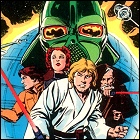 Marvel Comics begins shipping the first issue of its six-issue adaptation of George Lucas’ upcoming film Star Wars, with Lucas reaping the rewards of the licensing arrangement directly since 20th Century Fox has allowed him to keep all merchandising rights to the yet-to-premiere movie. Adapted from the screenplay and edited by Roy Thomas, with artwork by Howard Chaykin, lettering by Jim Novak and colors by Marie Severin, the first six issues offer an interesting visual take on a universe whose visuals were not finished enough for the artist to view ahead of time. After the six issue movie tie-in, Thomas and Chaykin would begin concocting the budding franchise’s first-ever non-film storylines.
Marvel Comics begins shipping the first issue of its six-issue adaptation of George Lucas’ upcoming film Star Wars, with Lucas reaping the rewards of the licensing arrangement directly since 20th Century Fox has allowed him to keep all merchandising rights to the yet-to-premiere movie. Adapted from the screenplay and edited by Roy Thomas, with artwork by Howard Chaykin, lettering by Jim Novak and colors by Marie Severin, the first six issues offer an interesting visual take on a universe whose visuals were not finished enough for the artist to view ahead of time. After the six issue movie tie-in, Thomas and Chaykin would begin concocting the budding franchise’s first-ever non-film storylines.
More about classic Star Wars Marvel Comics in Book Reviews
Hear about it on the Sci-Fi 5 podcast
Score Wars
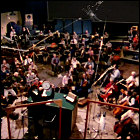 At Anvil Studios in Denham, England, John Williams and the London Symphony Orchestra convene for the first recording session for the Star Wars soundtrack. Over the course of the next 11 days, and with director George Lucas in attendance in the recording booth, all of the music for Lucas’ movie is rehearsed and recorded. Williams and Lucas had been introduced by their mutual friend Steven Spielberg, with whom Williams had worked on 1975’s Jaws (whose score had gone on to win Williams his second Oscar); Lucas’ original plan was to “score” Star Wars entirely with classical pieces. The first scene scored by Williams and the LSO is the rapid-fire chase through the Death Star, culminating in Luke and Princess Leia swinging across a chasm; other pieces recorded on the first day include the death of Obi-Wan Kenobi and the iconic theme music.
At Anvil Studios in Denham, England, John Williams and the London Symphony Orchestra convene for the first recording session for the Star Wars soundtrack. Over the course of the next 11 days, and with director George Lucas in attendance in the recording booth, all of the music for Lucas’ movie is rehearsed and recorded. Williams and Lucas had been introduced by their mutual friend Steven Spielberg, with whom Williams had worked on 1975’s Jaws (whose score had gone on to win Williams his second Oscar); Lucas’ original plan was to “score” Star Wars entirely with classical pieces. The first scene scored by Williams and the LSO is the rapid-fire chase through the Death Star, culminating in Luke and Princess Leia swinging across a chasm; other pieces recorded on the first day include the death of Obi-Wan Kenobi and the iconic theme music.
Future box office champion?
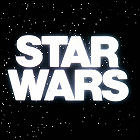 In a pre-holiday telegram to 20th Century Fox’s distribution team, the studio’s VP of domestic distribution, Peter Myers, boldly predicts that the upcoming George Lucas film Star Wars could break all standing box office records in America. “Exceptional entertainment usually pays off,” Myers writes, “but when it is coupled with a spectacular and innovative presentation, the critics, opinion makers, and the public will be electrified, and it is quite possible Star Wars will emerge as the all-time box office champion.” Though enthusiastically championed by 20th Century Fox president Alan Ladd Jr., Star Wars has thus far been considered a risky prospect by 20th Century Fox shareholders and executives.
In a pre-holiday telegram to 20th Century Fox’s distribution team, the studio’s VP of domestic distribution, Peter Myers, boldly predicts that the upcoming George Lucas film Star Wars could break all standing box office records in America. “Exceptional entertainment usually pays off,” Myers writes, “but when it is coupled with a spectacular and innovative presentation, the critics, opinion makers, and the public will be electrified, and it is quite possible Star Wars will emerge as the all-time box office champion.” Though enthusiastically championed by 20th Century Fox president Alan Ladd Jr., Star Wars has thus far been considered a risky prospect by 20th Century Fox shareholders and executives.
A boy, a girl, and a galaxy
 On or around this date in 1976, the very first teaser trailers for an upcoming 20th Century Fox movie called Star Wars is shown in theaters for the first time, with the ominous voice of Malachi Throne (who had, coincidentally, appeared or done voice-overs numerous times in classic Star Trek) declaring that “somewhere in space, this may all be happening right now.” With no hint of the genre-defining soundtrack music, unfinished visual effects, stand-in stock sound effects, and a logo rendered in Helvetica, the effect is perhaps a bit underwhelming.
On or around this date in 1976, the very first teaser trailers for an upcoming 20th Century Fox movie called Star Wars is shown in theaters for the first time, with the ominous voice of Malachi Throne (who had, coincidentally, appeared or done voice-overs numerous times in classic Star Trek) declaring that “somewhere in space, this may all be happening right now.” With no hint of the genre-defining soundtrack music, unfinished visual effects, stand-in stock sound effects, and a logo rendered in Helvetica, the effect is perhaps a bit underwhelming.
Star Wars filming wraps
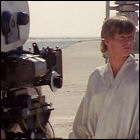 After grueling location shooting in Tunisia and lengthy studio filming at Elstree Studios in England, principal photography wraps up on George Lucas’ Star Wars. But returning to America, Lucas finds his newly-founded special effects studio, Industrial Light & Magic, in disarray, and months of miniature and second-unit filming must still be done before the planned (and later rescheduled) release date of Christmas 1976.
After grueling location shooting in Tunisia and lengthy studio filming at Elstree Studios in England, principal photography wraps up on George Lucas’ Star Wars. But returning to America, Lucas finds his newly-founded special effects studio, Industrial Light & Magic, in disarray, and months of miniature and second-unit filming must still be done before the planned (and later rescheduled) release date of Christmas 1976.
Star Wars begins filming
 With a budget of $8,000,000 behind him, writer/director George Lucas begins filming his ambitious new science fiction film Star Wars. The location shooting in Tunisia is far from easy, with every thing from dust storms to the language barrier between the filmmakers and the locals impeding progress.
With a budget of $8,000,000 behind him, writer/director George Lucas begins filming his ambitious new science fiction film Star Wars. The location shooting in Tunisia is far from easy, with every thing from dust storms to the language barrier between the filmmakers and the locals impeding progress.
Star Wars greenlit
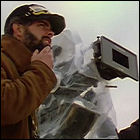 Having score a minor genre cult classic in THX-1138, and a legitimate mainstream hit with American Graffiti, director George Lucas’ new project, a science fiction film called Star Wars, is formally greenlit by 20th Century Fox, initially with a $7,000,000 budget. The project has been in script development at 20th Century Fox since the summer of 1973, with Universal Studios and United Artists having already passed on it, the later because of the anticipated budget requirements for Lucas’ visions of a sci-fi film on a grand scale. Due largely to being personally championed by Alan Ladd, Jr., president of Fox’s film division, the project still has hurdles to overcome, including numerous threats of the studio shutting it down. Filming will begin in 1976.
Having score a minor genre cult classic in THX-1138, and a legitimate mainstream hit with American Graffiti, director George Lucas’ new project, a science fiction film called Star Wars, is formally greenlit by 20th Century Fox, initially with a $7,000,000 budget. The project has been in script development at 20th Century Fox since the summer of 1973, with Universal Studios and United Artists having already passed on it, the later because of the anticipated budget requirements for Lucas’ visions of a sci-fi film on a grand scale. Due largely to being personally championed by Alan Ladd, Jr., president of Fox’s film division, the project still has hurdles to overcome, including numerous threats of the studio shutting it down. Filming will begin in 1976.
Rod Serling, Twilight Zone creator, dies
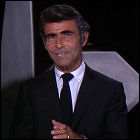 Celebrated writer Rod Serling dies at the age of 50 during a coronary bypass operation. An intelligent, rebellious mind from a young age, Serling developed an interest in writing – particularly for radio drama – before he graduated high school. He had also already developed a keen social consciousness at this age, which, combined with his authority-bucking nature, made his enlistment in the Army during World War II (immediately after graduating high school) an uneasy fit. As an Army paratrooper, Serling fought to liberate the Philippines from Japanese occupation. He was injured in combat and saw many of his comrades wounded or killed along the way, experiences which game him nightmares and informed many of his later works. He began his writing career in earnest after attending college on the G.I. Bill, and as radio gave way to television, he was at the forefront of the new profession of TV writing, with two scripts for anthology series – Patterns for Kraft Television Theatre and Requiem For A Heavyweight for Playhouse 90 – serving as career turning points. With corporate sponsors holding enormous sway over TV content in those days, Serling quickly found himself railing against the interference and outright censorship that resulted. Another anthology script, The Time Element, was intended as a pilot for an anthology Serling pitched to CBS, but was instead produced as an episode of Westinghouse Desilu Playhouse; it proved popular enough to get The Twilight Zone greenlit by CBS. Serling often used science fiction and supernatural settings in his new series to address issues such as racism, fascism, racial inequality, and the futility of war. He famously wrote many script drafts for 1968’s Planet Of The Apes, and returned to the anthology format in 1969 with a new series for NBC, Night Gallery, and, following that series, a radio drama suspense series called The Zero Hour for Mutual Radio.
Celebrated writer Rod Serling dies at the age of 50 during a coronary bypass operation. An intelligent, rebellious mind from a young age, Serling developed an interest in writing – particularly for radio drama – before he graduated high school. He had also already developed a keen social consciousness at this age, which, combined with his authority-bucking nature, made his enlistment in the Army during World War II (immediately after graduating high school) an uneasy fit. As an Army paratrooper, Serling fought to liberate the Philippines from Japanese occupation. He was injured in combat and saw many of his comrades wounded or killed along the way, experiences which game him nightmares and informed many of his later works. He began his writing career in earnest after attending college on the G.I. Bill, and as radio gave way to television, he was at the forefront of the new profession of TV writing, with two scripts for anthology series – Patterns for Kraft Television Theatre and Requiem For A Heavyweight for Playhouse 90 – serving as career turning points. With corporate sponsors holding enormous sway over TV content in those days, Serling quickly found himself railing against the interference and outright censorship that resulted. Another anthology script, The Time Element, was intended as a pilot for an anthology Serling pitched to CBS, but was instead produced as an episode of Westinghouse Desilu Playhouse; it proved popular enough to get The Twilight Zone greenlit by CBS. Serling often used science fiction and supernatural settings in his new series to address issues such as racism, fascism, racial inequality, and the futility of war. He famously wrote many script drafts for 1968’s Planet Of The Apes, and returned to the anthology format in 1969 with a new series for NBC, Night Gallery, and, following that series, a radio drama suspense series called The Zero Hour for Mutual Radio.
Battle For The Planet Of The Apes
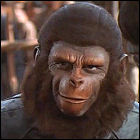 The last of the original cycle of time-bending sequels, Battle For The Planet Of The Apes is released in theaters. Facing diminishing returns, and a desire on the part of 20th Century Fox to exploit the Apes franchise on the small screen, the series comes to a suitably post-apocalyptic end.
The last of the original cycle of time-bending sequels, Battle For The Planet Of The Apes is released in theaters. Facing diminishing returns, and a desire on the part of 20th Century Fox to exploit the Apes franchise on the small screen, the series comes to a suitably post-apocalyptic end.
More about Planet Of The Apes in the LogBook
Hear about it on the Sci-Fi 5 podcast
Planet Of The Apes
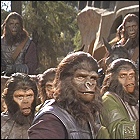 Starring Charlton Heston and Roddy McDowall, 20th Century Fox’s big-screen release of Planet Of The Apes quickly becomes one of 1968’s movie success stories, and easily one of the year’s two most influential genre films. Propelled into the future aboard a spacecraft from Earth, a trio of astronauts find themselves on a world ruled by sentient apes with no love of humanity whatsoever – for humanity nearly destroyed their world. The studio almost immediately sets the wheels in motion for a sequel.
Starring Charlton Heston and Roddy McDowall, 20th Century Fox’s big-screen release of Planet Of The Apes quickly becomes one of 1968’s movie success stories, and easily one of the year’s two most influential genre films. Propelled into the future aboard a spacecraft from Earth, a trio of astronauts find themselves on a world ruled by sentient apes with no love of humanity whatsoever – for humanity nearly destroyed their world. The studio almost immediately sets the wheels in motion for a sequel.
More about Planet Of The Apes in the LogBook
Hear about it on the Sci-Fi 5 podcast
The Twilight Zone: The Bewitchin’ Pool
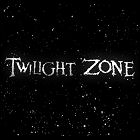 The 156th and final episode of Rod Serling’s The Twilight Zone airs on CBS. Mary Badham stars. The series will be revived at least once per decade, to varying degrees of success, beginning in the 1980s; Serling will return to TV with an anthology format series in the 1970s with Night Gallery.
The 156th and final episode of Rod Serling’s The Twilight Zone airs on CBS. Mary Badham stars. The series will be revived at least once per decade, to varying degrees of success, beginning in the 1980s; Serling will return to TV with an anthology format series in the 1970s with Night Gallery.
This series is not yet fully chronicled in the LogBook. You could help change that.
More about The Twilight Zone in the LogBook and theLogBook.com Store
The Twilight Zone now streaming on Paramount Plus